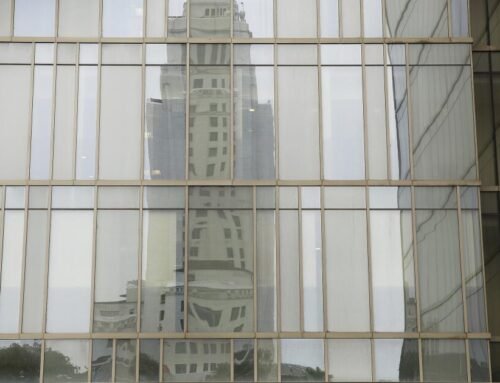Environmental advocates concerned about the presence of E.coli in Boulder Creek are renewing the call for greater attention to the issue, and this time their focus is aimed more directly at the University of Colorado Boulder.
Art Hirsch, a retired environmental engineer, self-described watershed advocate and member of the group Boulder Waterkeeper, has sent CU Boulder officials, including Chancellor Phil DiStefano, a complaint by certified mail concerning what Hirsch alleges are “illicit discharges” entering the creek from the university’s storm sewer system.

Cliff Grassmick/Staff Photographer
A discharge point of drainage from the University of Colorado Boulder campus near the Folsom Street bridge and the Boulder Creek path.
“Boulder Waterkeeper expects that CU will take this complaint and observations seriously. We expect that the sources of these illicit discharges will be investigated and mitigation efforts initiated immediately to stop continued discharges of E.coli from entering Boulder Creek,” the letter, signed by Hirsch, states.
E.coli is a bacterial marker for fecal pollution, which lives in the intestines of humans, wildlife, cattle and dogs — but it is not always harmful to humans. However, one strand, known as 0157:H7, can cause abdominal cramps, diarrhea, vomiting and even life-threatening conditions.
The portion of Boulder Creek that qualifies as impaired, according to Boulder Waterkeeper, runs from 13th street on the west to the confluence with South Boulder Creek near 61st Street on the east, and Hirsch’s letter, dated Wednesday, focuses largely on what is known as outfall C, a CU stormwater discharge point shared by CU Boulder and the city of Boulder just west of the Folsom Avenue bridge.
Although the outfall C location is shared by the university and the city, Hirsch’s group pins responsibility for the discharges there primarily on CU Boulder, because it is on the university’s property, on the creek’s south bank.
Through open records requests pertaining to sampling by CU Boulder at that point — it also is monitored by the city — Boulder Waterkeeper has found record of E.Coli concentrations at outfall C as high as 4,838 colony-forming units per 100 milliliters. The standard set by the state for Boulder Creek is 126 cfu/100 ml.
City monitoring there from July 2016 to January 2018 shows an average of 1,316 cfu/100 ml, and that the 126 cfu/100 ml level was exceeded 54 times, Hirsch said.
University takes matter ‘seriously’
“There is a definition of what an illicit discharge is, and an illicit discharge is a discharge of water that is not stormwater related,” Hirsch said. “I’ve tried to collect samples, and I have looked at their discharges and I have seen that discharges occur even in dry weather. So they are not storm-related. They are coming from some source I am not aware of.”
CU Boulder spokesman Joshua Lindenstein, in an email, said the university is in compliance with its current state stormwater discharge permit, that it has been doing more than required under that permit to monitor for and mitigate against E.coli in storm drains discharging into the creek. A new stormwater permit coming from the state will include “additional guidance” on how to address the issue, he said.
“CU Boulder continues to take this matter seriously and has devoted increased resources toward monitoring and mitigation in recent years,” Lindenstein said in the email.
Lindenstein said CU Boulder Environmental Health and Safety staff regularly monitor for E. coli in storm drains that discharge into Boulder Creek, and that when E. coli is detected through sampling, the source “has often proven to be fecal matter from raccoons inhabiting the storm drains.”
He added that “significant efforts have been made in recent years to curtail wildlife access to storm lines,” and that past initiatives have demonstrated significant reductions of E. coli levels for the project areas.
Through ongoing maintenance activities, he said, CU Boulder continually investigates sanitary sewers to determine whether leaks are occurring and that on the rare occasion leaks have been found, the university has promptly made repairs to ensure that sanitary systems are not impacting storm lines.
Future efforts to combat E.coli, he said, include continued collaboration with the city of Boulder on the overall approach to mitigating E. coli levels in the creek, increasing sampling and investigation activities related to identifying potential sources of elevated E. coli levels in storm lines on campus, and revisiting the university’s animal access projects to improve engineered solutions for limiting wildlife impacts to storm lines.
Hirsch has heard about the raccoons before, and said, “I think that there may be other sources at the university that go above and beyond racoons,” to include potentially leaky sanitary systems.
“It’s up to them to find the source of the contamination, and to fix that.”
The Boulder Waterkeeper letter also cites high levels of E.Coli at three other outfall points ranging from 17th Street to 28th Street.
State ‘taking action’
A statement from MaryAnn Nason, a spokesperson for the Water Quality Control Division of the Colorado Department of Public Health and Environment, pointed out that elevated E coli does not always mean an illicit discharge is occurring or that the discharge permit for CU Boulder is being violated.
“The municipal separate storm sewer permit allows CU to discharge sources like lawn watering water into local creeks. Because there are different sources, this can make it difficult to identify specifically where the elevated levels of E.coli are coming from,” she said.
“The state is taking action by proposing new permit conditions in the upcoming municipal separate storm sewer permit renewal that could help. The draft permit includes requirements that would apply to the university to address E coli in discharges to Boulder Creek, including education, storm sewer cleaning, monitoring, and reporting. The revised MS4 (municipal separate storm sewer system) permit that covers the university has been noticed for public comment through Sept. 16, 2019. Additionally, the division will follow up with the university to identify if there are any illicit discharges happening.”
The city’s stormwater quality supervisor was copied on Hirsch’s letter, and Meghan Wilson, communications manager for Public Works and Planning, responded with an emailed statement.
“The city and CU have collaborated on the issue of E. coli for a number of years and have increased these discussions based on new E. coli related requirements “ in a draft of the pending new MS4 permit from state that will impact CU Boulder, Wilson said.
“The city plans to continue this collaboration and discussions about how to best work together to address E.coli in Boulder Creek,” she said.
The presence of E.coli in the city’s main waterway is not a new issue. A 2006 report on the health of the Boulder Creek Watershed showed that in 2004 part of Boulder and Coal creeks were included in the state’s roster of water-quality-impaired streams, due to high levels of E.coli.






Leave A Comment